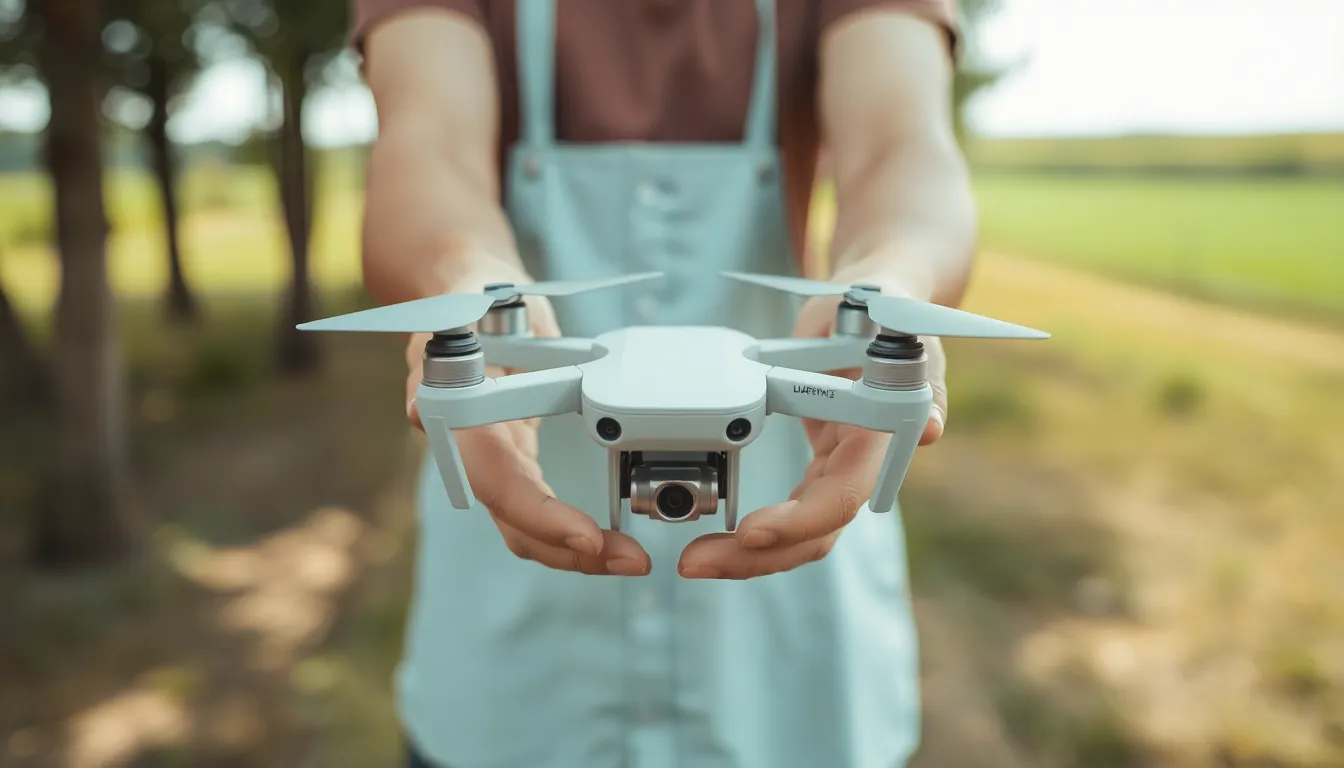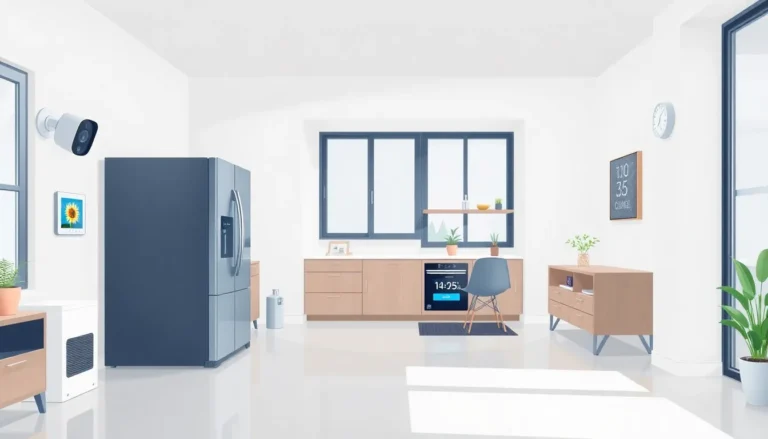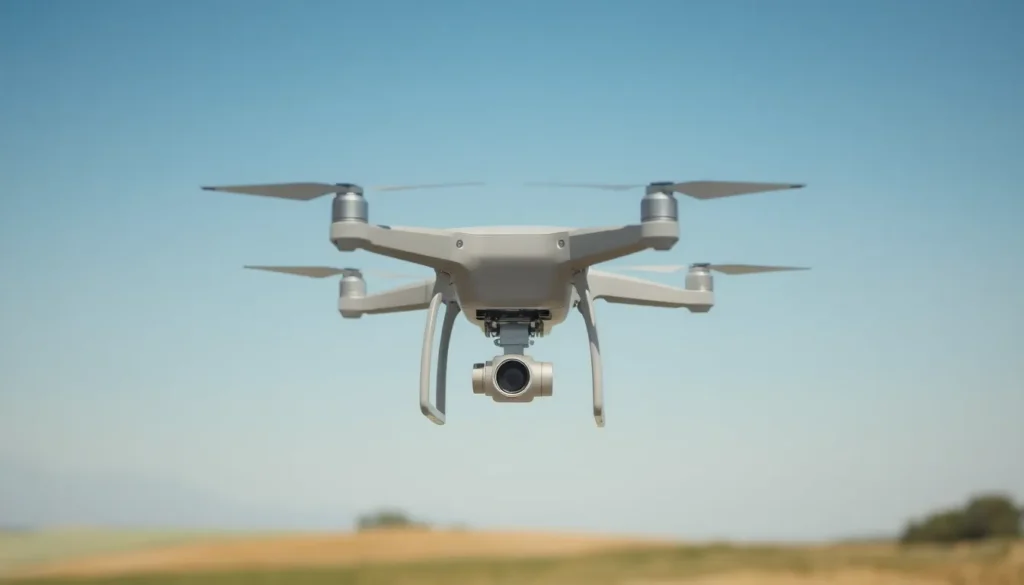Table of Contents
ToggleIn a world where bigger often means better, compact drones are here to prove that size doesn’t always matter. These pint-sized flying machines pack a punch with their impressive technology and versatility, making them the perfect gadgets for both hobbyists and professionals. Whether it’s capturing breathtaking aerial shots or delivering snacks to friends (because who doesn’t love a drone delivery?), compact drones are changing the way people think about flight.
Overview of Compact Drones
Compact drones feature advanced technology that enables versatility in various applications. These small devices excel in capturing high-quality aerial imagery, making them popular among photographers and videographers. Hobbyists enjoy flying compact drones due to their ease of use and portability. Professionals increasingly incorporate compact drones into workflows for tasks like surveillance, construction monitoring, and environmental assessment.
Battery life for compact drones varies, often lasting between 15 to 30 minutes on a single charge, depending on the model and usage conditions. They typically weigh under two kilograms, promoting convenience during transport. Some models include features like obstacle avoidance systems and GPS, enhancing user safety and experience.
Compact drones also accommodate various attachments, allowing customization for specific tasks. For instance, one can apply gimbals for smoother video capture or swap cameras for enhanced imaging capabilities. Many manufacturers prioritize durability and build quality, equipping these drones to withstand minor impacts and challenging weather conditions.
The market for compact drones has expanded significantly, with options available for different skill levels. Entry-level drones offer user-friendly controls, while advanced models cater to experienced users. As regulations evolve, the integration of compact drones into commercial applications continues to grow, paving the way for innovative uses.
Drones like these revolutionize traditional practices in industries such as agriculture, where they facilitate crop monitoring and data collection. Compact drones demonstrate that smaller sizes can offer substantial benefits, combining efficiency with portability. This trend highlights a shift in how consumers and businesses approach aerial technology, showcasing that compact drones are carefully designed to deliver impressive performance without the bulk.
Benefits of Compact Drones

Compact drones offer numerous advantages that enhance their appeal among users. These benefits include portability, convenience, and versatility.
Portability and Convenience
Portability stands out as a key advantage of compact drones. Weighing under two kilograms, these devices easily fit into backpacks or small bags. Convenience increases as users can transport them to various locations without hassle. Compact designs allow for quick setup and takedown, which is critical for spontaneous flights. Many models feature foldable arms, further minimizing storage space. The ability to charge quickly ensures that users spend more time flying than preparing.
Versatility in Usage
Versatility defines the applications of compact drones. They serve various sectors, including entertainment, agriculture, and surveying. Photographers benefit greatly from their ability to capture stunning aerial shots effortlessly. Businesses use compact drones for inspections, enabling efficient monitoring of construction sites and infrastructure. Schools incorporate them into educational programs, promoting STEM learning through hands-on experience. Furthermore, recent advancements in technology enable these drones to perform complex tasks, enhancing their utility in multiple environments. Compact drones adapt easily, making them suitable for both enthusiasts and professionals alike.
Popular Models of Compact Drones
Several compact drone models stand out in the market, catering to various needs and preferences. Each model offers unique features that enhance user experience and performance.
Model A Review
The DJI Mini 2 impresses with its lightweight design, weighing just 249 grams. This drone features a 12 MP camera that captures 4K video at 30 frames per second. Users appreciate its 31-minute flight time, providing ample opportunities for aerial photography. With a maximum range of 10 kilometers, the Mini 2 allows users to explore wide areas with ease. Smart features like QuickShot and GPS assist with capturing stunning shots effortlessly. Compact and user-friendly, this model’s portability makes it ideal for travelers and hobbyists alike.
Model B Review
The Parrot Anafi stands out due to its unique capabilities and 4K HDR camera. Users enjoy its 21 MP camera, providing high-quality images even in challenging lighting. Weighing 320 grams, this drone remains easy to transport, fitting comfortably in a backpack. Its 25-minute flight time is sufficient for most shooting scenarios. Innovative features like vertical tilt gimbal and 180-degree camera rotation offer versatile angles. With a simple app interface, users can quickly access editing and sharing tools, making the Anafi a favorite among content creators.
Features to Consider When Choosing Compact Drones
When selecting compact drones, several key features significantly impact performance and user experience.
Camera Quality
Camera quality plays a crucial role in the overall functionality of compact drones. High-resolution cameras elevate the aerial photography experience, delivering stunning images and smooth videos. Many drones, like the DJI Mini 2, offer 12 MP cameras capable of 4K video at 30 frames per second. Advanced models often include features such as gimbals, which stabilize images, allowing for high-quality content creation. Drones equipped with HDR capabilities provide enhanced detail in various lighting conditions, making them ideal for photographers and videographers. Ultimately, camera quality determines the drone’s suitability for different applications, from casual hobbyist shoots to professional projects.
Battery Life
Battery life significantly affects the usability of compact drones. Most compact drones typically offer flight times ranging from 15 to 30 minutes. For example, the DJI Mini 2 boasts a flight time of 31 minutes, maximizing time spent in the air. Longer battery life allows for extended aerial shoots and reduces the frequency of recharging between flights. Users benefit from quick charging capabilities found in several models, which helps maintain productivity on-site. It’s essential to consider the balance between flight duration and the drone’s weight, ensuring optimal performance without compromising portability. Prioritizing battery life enhances the overall experience for both hobbyists and professionals.
Compact drones are reshaping the landscape of aerial technology. Their combination of portability and advanced features makes them a game-changer for both casual users and industry professionals. With the ability to capture high-quality images and perform various tasks, these drones prove that size doesn’t determine capability.
As the market continues to expand and technology advances, the potential applications for compact drones will only grow. This evolution highlights their essential role in industries ranging from entertainment to agriculture. Embracing compact drones opens up new possibilities for creativity and efficiency, making them a valuable tool for anyone looking to explore the skies.







